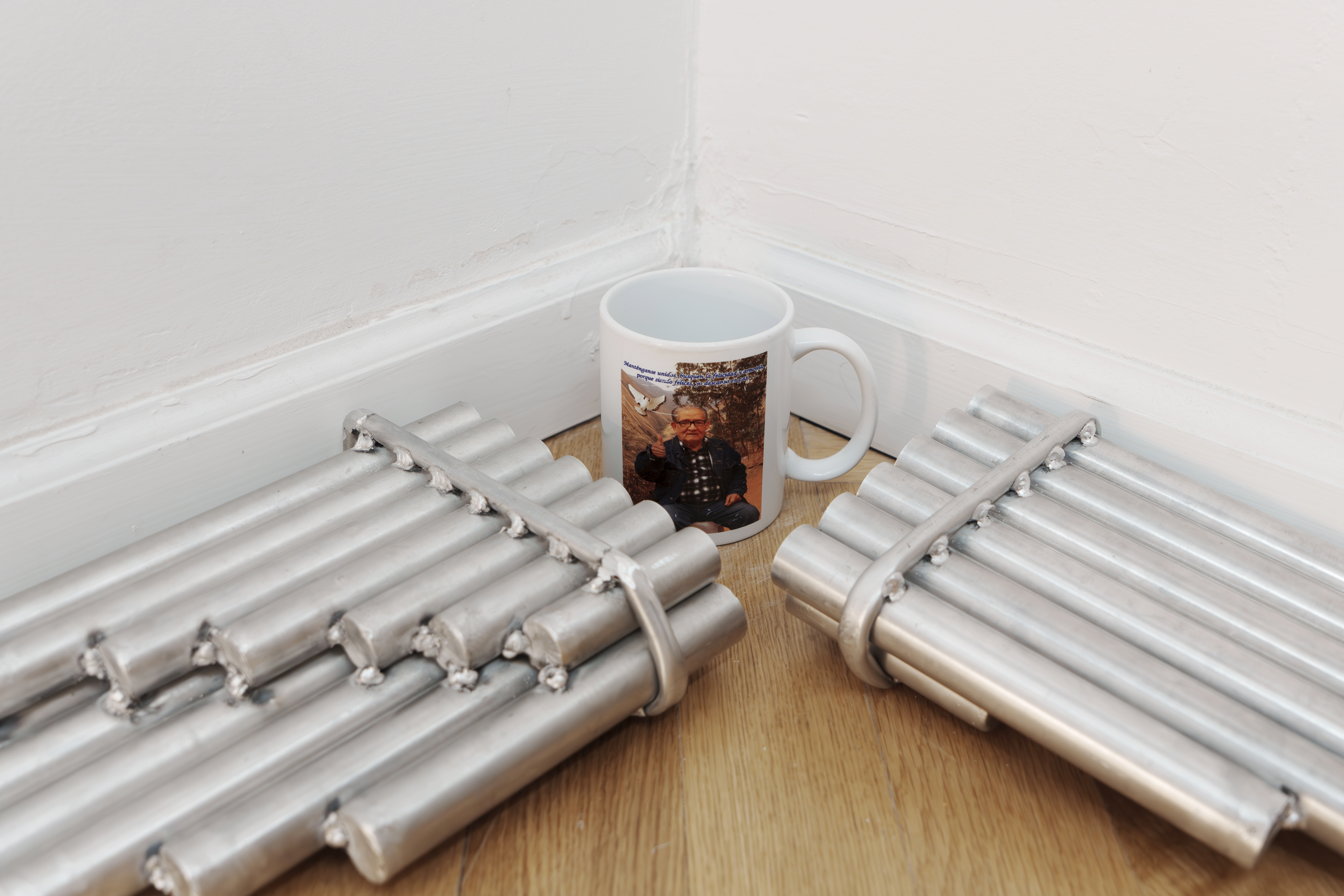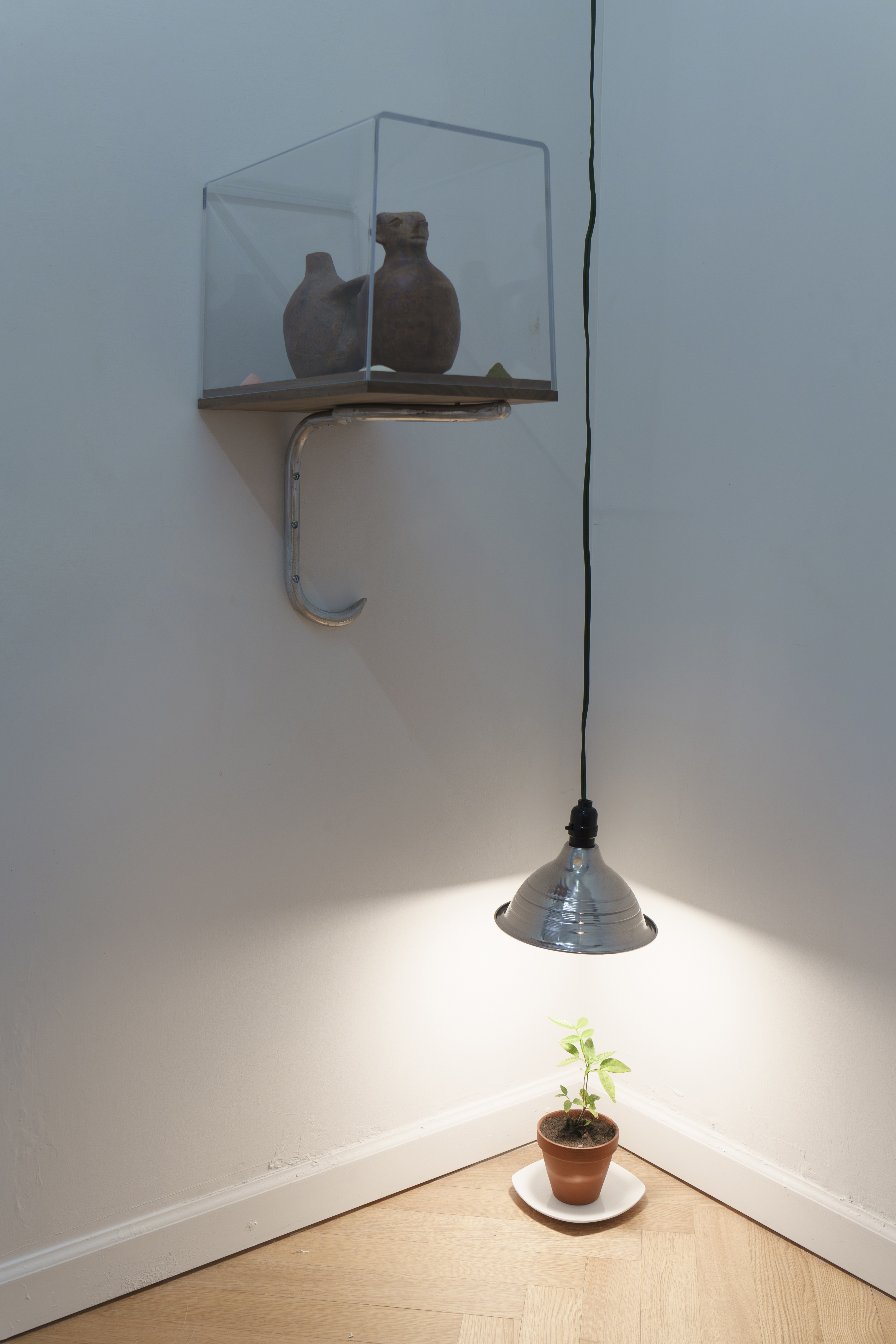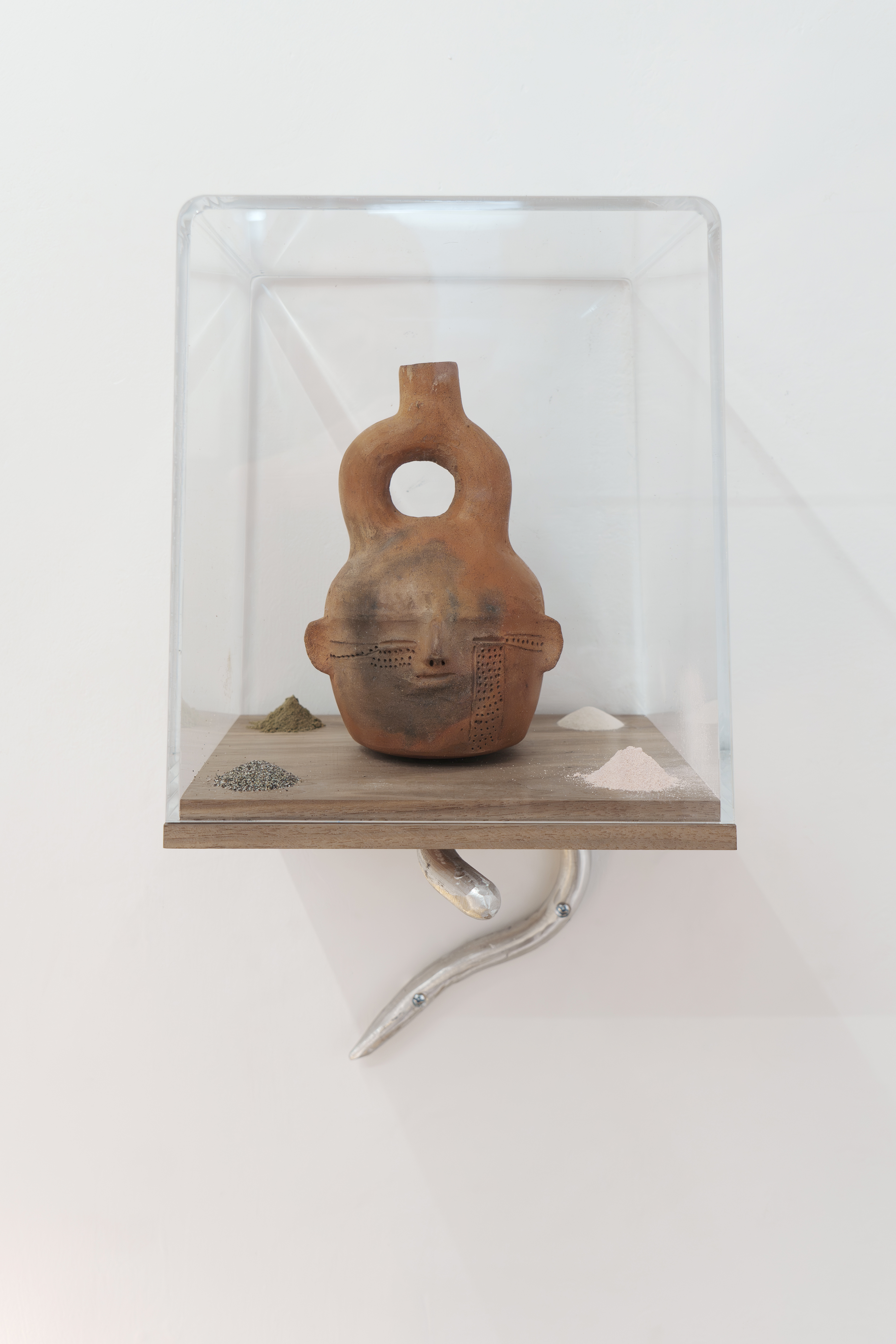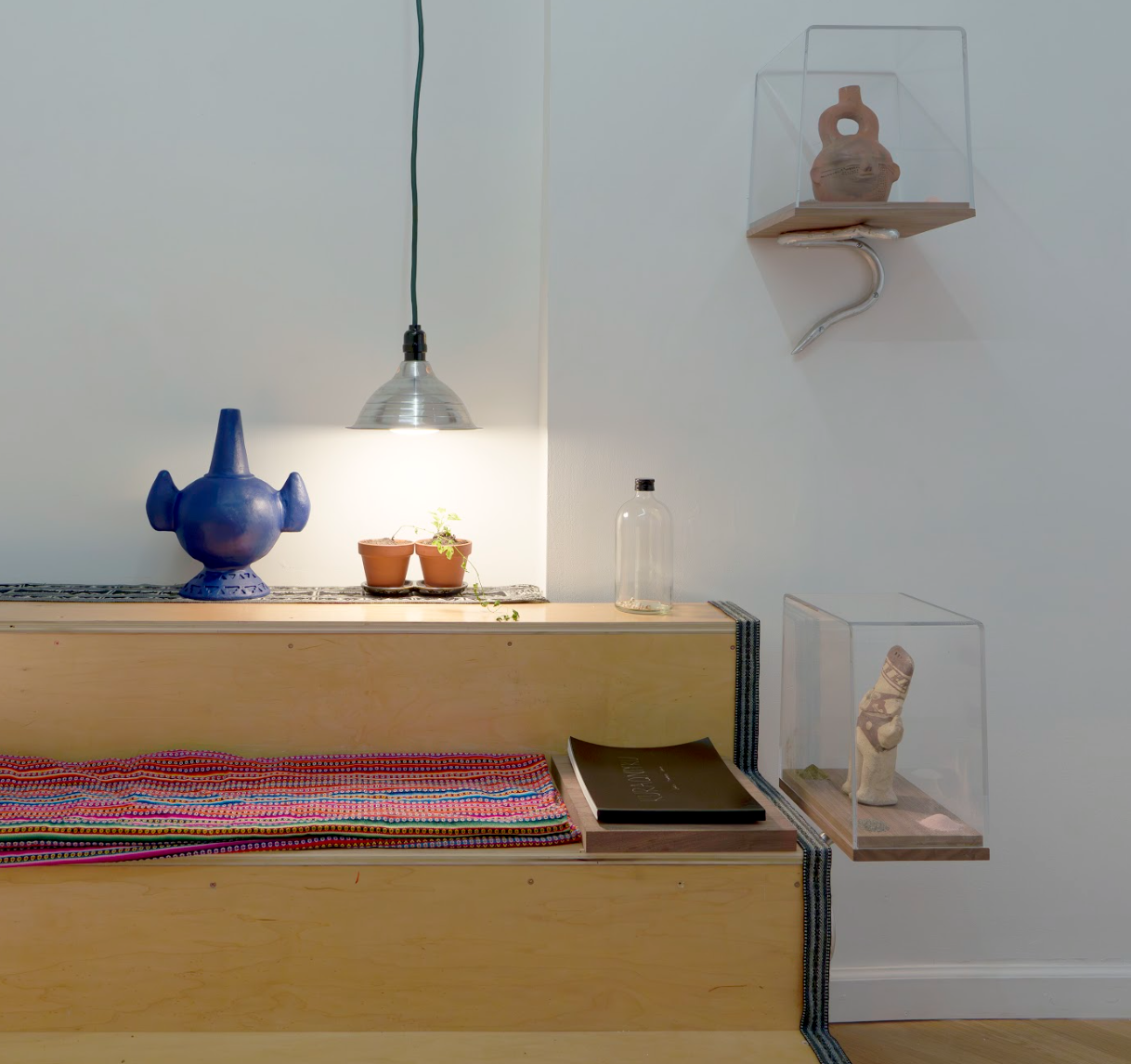1. yachachiqniykunapaq

yachachiqniykunapaq
Carlos Jimenez Cahua
Curated by Jesse Bandler Firestone
Below Grand, Nov 15 – Dec 20, 2025
For his second New York solo exhibition, yachachiqniykunapaq, Carlos Jimenez Cahua presents makiykupi, hoqmanta, an experimental social project involving the repatriation of wakas, sacred and ceremonial objects from the Andean region originally buried alongside the dead, dating from as far back as 3,000 years ago. Purchased on the open market and taken out of private collections, these wakas are now, for the first time since their looting, under the care of Andean descendants in their daily lives, residing in homes, offices, and, in one case, the dormitory room of a college student. A total of ten community members have agreed to collaborate with Jimenez Cahua and be the caretakers of these artifacts. Some of these artifacts, alongside other works, will be on view at Below Grand, a small gallery on the Lower East Side housed within a restaurant supply store.

yachachiqniykunapaq introduces a self-organized repatriation strategy that is both lived and symbolic, circumventing the sluggish pace of bureaucratic institutions and the false benevolence of collectors. Through the dispersal of artifacts into the direct responsibility of community members, Jimenez Cahua works with and against the idea of museums as both an institution and an aesthetic form that is typically self-positioned as the primary—if not the only—legitimate space to encounter archaeological and sacred objects. This assumption is, at its core, speciously corrupt: encyclopedic and collecting museums not only assert themselves as the sole caretakers of these artifacts but often serve as the retirement homes for collections sustained by the looting and displacement of these objects, in the first place.

Jimenez Cahua approaches the gallery similarly, wherein this presentation is understood as just one part of a much larger choreography of repair and return. There is, too, a kind of mirrored journey in these objects’ travels: once displaced from their lands through colonial extraction, they now meet again with people of Andean descent whose own migrations were often shaped by those same forces. Both the objects and their caretakers have traveled far from home, yet here—across centuries and dislocation—they are now reunited.

Through this multi-pronged approach, he proposes a new meaning to the term “public trust”, insisting that stewardship can be trusted to the living descendants of those peoples who created these objects, where a continuity of care emerges from shared lineage, practice, and community. There, within circles of friends, families, and local networks, often beyond the reach of an art audience, they continue to raise the very questions of care, restitution, and belonging that the exhibition sets into motion.


Rather than offering closure, makiykupi, hoqmanta, meaning, “in our hands, again” in Quechua, insists on complexity, foregrounding the ethical and practical dilemmas that attend any attempt at restitution. For example, repatriation to the Peruvian government is complicated by a lack of robust preservation of archaeological sites and Indigenous cultural patrimony, while leaving objects in foreign collections perpetuates their alienation from living traditions; yet dispersing these objects into domestic spaces presents its own risks and challenges as well. Jimenez Cahua embraces these potential pitfalls and imperfections, leaning into the messy and necessary work of devising community-based solutions for stewardship.

yachachiqniykunapaq and makiykupi, hoqmanta were carried out with permission from respected elders and cultural knowledge bearers, who affirmed and guided Jimenez Cahua’s initiative. Before their display and subsequent dispersal, each object went through a limpieza—a ceremonial purification involving fire, tobacco, coca leaves, musical instrumentation, and intergenerational community—thereby stripping away the residues of greed, theft, and harm that had accumulated during their time in private hands. Below Grand, too, has undergone a cleansing, so that these objects, and you, may be received with respect and care.

The collaborating community members are listed below.
CU & family, home, Union City, NJ
GM & family, home, Clementon, NJ
CJC, office, Brooklyn, NY
OG, office, New York, NY
FABA, home, Princeton, NJ
CM, home, Littleton, CO
PM & family, home, Bronx, NY
AMQ, home, Harrison, NJ
DF & family, home, Deer Park, NY
EB, home, Queens, NY